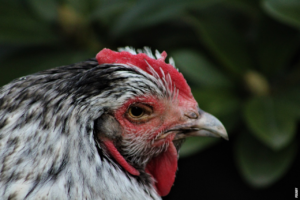The Purpose of Bark: Nature’s Protective Shield
When you wander through a lush forest or stroll along a tree-lined street, have you ever stopped to wonder why trees have bark? This unassuming outer layer plays a crucial role in the survival and well-being of trees, acting as nature’s protective shield. Let’s delve into the fascinating world of bark and uncover the secrets it holds.
The Multifaceted Functions of Bark
Bark serves a multitude of purposes, acting as a flexible armor that guards against various threats. Firstly, it acts as a physical barrier, shielding the delicate inner layers of a tree from external damage. This is especially important to protect against abrasive forces, such as wind, rain, and extreme temperatures.
Furthermore, bark serves as a defense mechanism against pests, diseases, and harmful pathogens. Just like our skin protects us from harmful invaders, the bark of a tree contains special compounds that deter and repel insects, fungi, and bacteria. It is nature’s ingenious way of keeping trees healthy and thriving.
The Tree’s Lifeline: Phloem and Cambium
Deep beneath the protective bark lies the intricate network of phloem and cambium. These two vital tissues are responsible for the transportation of nutrients and water throughout the tree. The phloem, located just beneath the bark, carries the sugars produced during photosynthesis to nourish different parts of the tree, while the cambium facilitates the growth of new cells, allowing the tree to expand and develop.
A Window into the Past: Tree Rings
Have you ever wondered how scientists determine the age of a tree? The answer lies within the bark. Tree rings, also known as annual growth rings, are visible on the cross-section of a tree trunk. Each ring represents a year of growth, and by counting these rings, scientists can estimate the age of a tree. Tree rings also provide valuable information about past environmental conditions, such as periods of drought or abundant rainfall.
Beauty and Diversity: Bark’s Aesthetic Appeal
While the primary function of bark is protection, it also adds tremendous beauty and diversity to the natural world. The texture, color, and patterns of bark vary greatly across different tree species, creating a visually stunning tapestry in forests around the globe. From the smooth, silvery bark of birch trees to the rugged, deeply furrowed bark of oak trees, each species has its unique signature.
In conclusion, the bark of a tree is not simply an ordinary outer layer; it is a remarkable adaptation that ensures the survival of trees. Through its protective abilities, bark shields trees from external threats, defends against pests and diseases, and provides a lifeline for nutrient transport and growth. Additionally, the aesthetic appeal of bark adds a touch of splendor to our natural landscapes. So, next time you find yourself in the presence of a magnificent tree, take a moment to appreciate the often overlooked but vital role played by its bark.
Post



